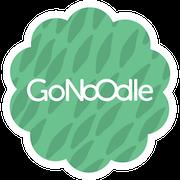[Ed. note: Common Sense Education’s Edtech Eleven is chosen by Common Sense Education every month and helps educators find the best edtech tools, learn best practices for teaching with tech, and equip students with the skills they need to use technology safely and responsibly.]

Things move fast in the edtech world, and we hear all the time from teachers how hard it can be to keep up. This is why we’ve created the EdTech Eleven: our monthly list of noteworthy tools generating buzz in the edtech world. While these aren’t recommendations or ratings (you have to check out our Top Picks for that), what you’ll find on the EdTech Eleven is a quick and current list of trending tools you might want to check out.
February 2017 Updates
What left the list? CommonLit, Dragonbox Big Numbers, ReadWorks Digital
What’s new? Checkology, Explain Everything, Toontastic 3D
Bitmoji — an app that lets users create their own personalized emoji — is the second most popular free app on the Apple store, and was bought by Snap in 2016. There’s no doubt it’s trending, but why did it make an edtech list? Because like Bitstrips before it, Bitmoji has caught fire with educators who we’ve seen use their Bitmojis to engage students as well as their PLNs.
In edtech right now, there’s nothing more novel — or generating more buzz — than BreakoutEDU. It brings the popular puzzle-room phenomenon to classrooms through purchasable physical kits or a DIY guide to building your own. What has really set them apart thus far, though, is their vibrant community of educators sharing stories and collaborating on new scenarios.
Created by the News Literacy Project — a nonpartisan nonprofit focused on building students’ digital literacy — checkology virtual classroom offers students a blended learning experience that helps them practice skills of separating fact from fiction using real-world stories and examples. We’ve heard some buzz around this tool recently and for good reason: it seems perfectly positioned to help teachers tackle the challenging media circumstances students now face.
Explain Everything Classic has long been one of the most popular tools in the crowded interactive whiteboard and lesson genre. While we rated Explain Everything Classic highly, we noted the detailed but complex design vis a vis competitors like Educreations. With this brand new revision, titled simply Explain Everything, the app has undergone a total visual overhaul that seems to offer a more elegant, intuitive experience, and adds new features like collaboration on projects.
There aren’t many — if any — tools out there like GoNoodle, which provides video and game-based “brain breaks” of physical activity for students. That might explain why we’ve seen GoNoodle take a big leap this school year, emerging as one of the top trending tools on Common Sense Education.
(Next page: Edtech tools for February 6-11)
VR hasn’t quite taken off the way many thought it would, but it might have its first “killer app” in Google Earth VR. While we haven’t gotten our hands on it, those that have seem to be in agreement: it’s an extraordinary, perspective-altering experience that realizes the full potential of the Google Earth platform. It’s a surefire hit for classrooms that can manage to afford the costly HTC Vive platform.
A major innovator and early success (in the latest edtech boom), Remind is still making headlines. Most recently, they’ve added “Activities,” a way for parents to pay teachers and schools for field trips, fundraisers, and more through the apps using their credit cards. It’s a smart way to build revenue while also providing a useful, timesaving service to schools.
In edtech, some tools just click, and Seesaw is one of those tools. They’ve had a meteoric rise over the past year, thanks in large part to filling a real need for teachers: helping students share work and progress with parents. It seems like each month Seesaw adds new functionality that cements their position as the portfolio tool of choice.
While there’s no shortage of apps out there about space, Tinybop’s take on this genre is of special interest given their pedigree as a prolific developer of super stylish apps. Space is their latest, and it follows the classic formula that earned Tinybop’s Infinite Arcade a spot on our Best EdTech of 2016 list; sure it looks good, but it also features elegant play-based learning about our solar system.
There’s really no other app out there like TinyTap, a tool that helps teachers create, share, and publish bite-sized interactive lessons like you’d see on an educational website. We’ve followed their development for awhile, and watched as they’ve evolved and added new, useful features. The latest on the list, “Talk or Type,” makes the tool more accessible, allowing students to respond to questions by speaking or writing.
The first Toontastic was one of our earliest 5-star rated apps, and garnered wide acclaim and a coveted Google buy-out for the developer, Launchpad Toys. This revised version is the developer’s first release as part of Google. The easy-to-create animation (via touchscreen drawing and photo taking) and whimsical puppet-style storytelling from the original Toontastic remains; however, this version adds a slick new 3D look that gives the app depth in more ways than one.
Did we miss anything? Let us know!
- 4 ways to encourage play in education - April 25, 2024
- CoSN IT Leader Spotlight: Lisa Higgins - April 25, 2024
- It’s time to pay student teachers - April 25, 2024


 Bitmoji
Bitmoji BreakoutEDU
BreakoutEDU checkology Virtual Classroom
checkology Virtual Classroom Explain Everything
Explain Everything GoNoodle
GoNoodle Google Earth VR
Google Earth VR Remind
Remind Seesaw
Seesaw Space by Tinybop
Space by Tinybop TinyTap
TinyTap Toontastic 3D
Toontastic 3D